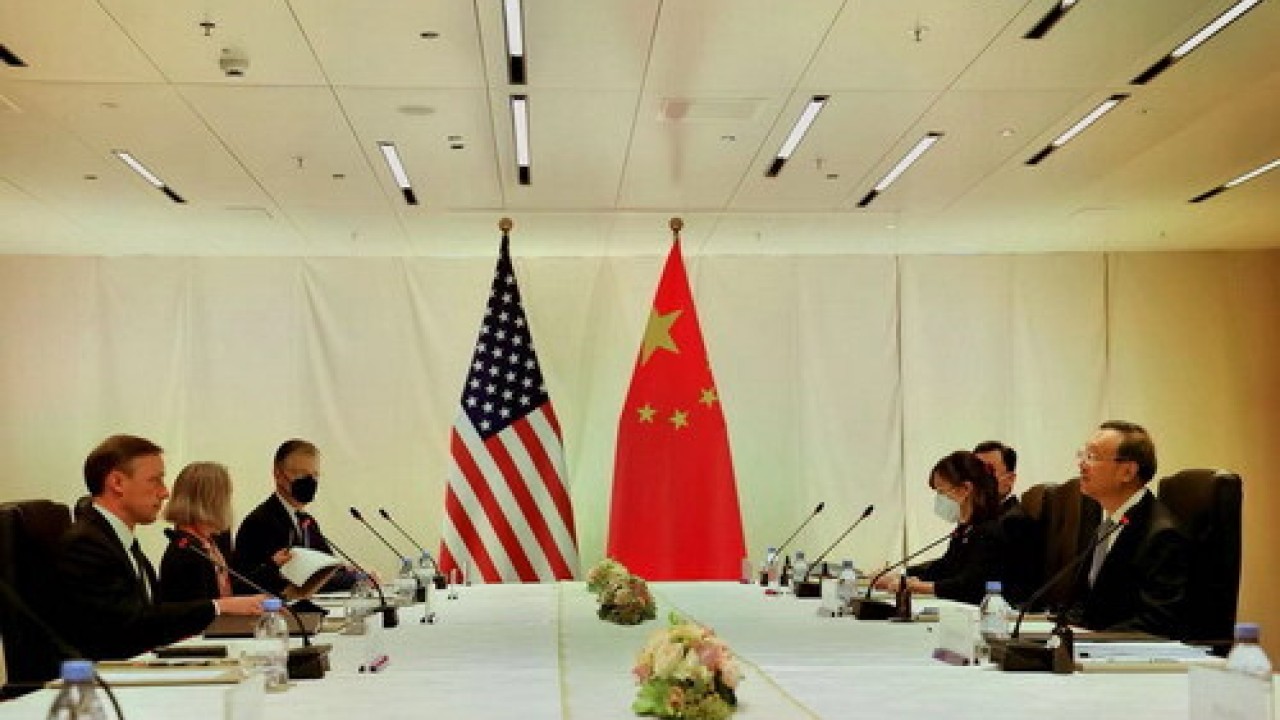
No discord, no concord: Xi-Biden meeting is a sign China-US relations may enter a period of de-risking
- The leaders have agreed in principle to hold a virtual meeting before the end of the year – the first formal talks since Biden took office
- It comes amid recent developments that provide grounds for cautious optimism, as both countries have started to move away from their confrontational approach
That it also comes after months of tension marked by acrimony and accusations between the two countries has given a new interpretation to an old saying in China: “No discord, no concord.” Beijing and Washington have improved mutual understanding through rivalry and confrontation, even though both leaders had supposedly already established a rapport through spending a substantial amount of time together when they were vice presidents.
The fact that it took them so long to have a formal meeting also reflects the changing dynamics of the tortuous path China-United States relations have embarked upon.
Is conflict between the US and China inevitable? Not if they talk to each other
At the beginning of the year, there was brief, misplaced optimism that a Biden presidency was more likely to put a floor under the free-fall in bilateral ties after the Trump administration’s chaotic four years in power. But since then, relations have worsened, and the confrontational nature of the relationship has continued to dominate global headlines.
But Washington’s tough rhetoric and its much-touted efforts to rally its Western allies to gang up on Beijing have failed to alter China’s behaviour and stance at home and abroad, contrary to the original American thinking that strength in numbers would make the Chinese leadership backtrack. In fact, Beijing has doubled down on its diplomatic approach, which apparently prodded Washington to rethink some elements of its evolving strategy on China. The Biden administration has reportedly undertaken a months-long review of its policies towards China.
Hyping China’s crackdown as a profound revolution risks a vicious circle
It is within this context that last month, Xi and Biden had a lengthy phone call to discuss a wide range of strategic issues and set a framework for bilateral ties to move forward. In particular, the statements from both sides emphasised that Beijing and Washington had no reason to allow competition to veer into conflict, and the US had no intention of changing the one-China policy. The phone conversation was their first in seven months and only the second since Biden came to power.

Tai also said the US would restart a process for American companies to apply for exemptions from tariffs, which many economists have long argued were tantamount to a tax on American consumers and hurt American businesses more than Chinese exporters. However, her speech was light on details, disappointing some analysts and industry groups – though this is to be expected.
As China seeks ‘common prosperity’, it cannot afford restrictions on charity
As Tai said she planned to have “frank” discussions with Vice Premier Liu He in the coming days, she apparently intends to use the tariffs as leverage to extract concessions from her Chinese counterpart.
Meanwhile, the six-hour meeting in Zurich on Wednesday between China’s top diplomat Yang and US national security adviser Jake Sullivan, which led to the in-principle agreement of the summit between Xi and Biden, covered other strategic issues. Both sides described the meeting as more constructive and detailed than the Alaska meeting in March, as they agreed to maintain high-level dialogue and communication.
Perhaps as a sign of the gulf between the countries, both Yang and Sullivan even disagreed on the term with which to characterise bilateral ties. While Sullivan said the US would continue to engage with China at a senior level to “ensure responsible competition”, Yang said China opposed defining relations as “competitive”.
Still, these developments provide grounds for cautious optimism, as both countries have started to move away from their confrontational approach and are entering a period during which they will find ways to mitigate risks and dangers in their complex and fraught bilateral relationship.


